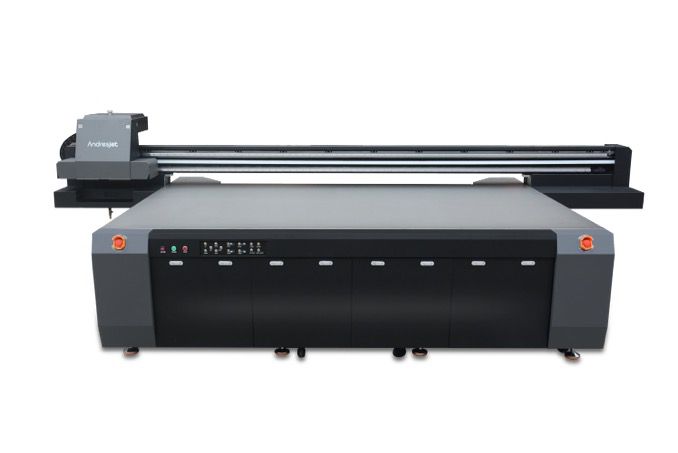UV Flatbed Printer: A Guide to Selecting the Right Media for Your Application
In the realm of digital printing, UV flatbed printers have revolutionized the way we approach print production. These versatile machines offer unparalleled flexibility in terms of the materials they can print on, making them a staple in various industries ranging from signage and graphics to packaging and decorative applications. However, the success of your UV flatbed printing project largely hinges on selecting the right media for your specific application. With a myriad of options available, navigating through the choices can be overwhelming. This guide aims to demystify the process and provide you with valuable insights to help you make an informed decision.

Understanding UV Flatbed Printers
Before diving into media selection, it’s essential to have a basic understanding of how UV flatbed printers work. Unlike traditional printers that use inkjets or lasers, UV flatbed printers employ ultraviolet (UV) light to cure the ink instantly as it is deposited onto the media. This process allows for printing on a wide array of substrates, including rigid materials like wood, glass, metal, and plastics, as well as flexible materials such as vinyl and fabrics.
The UV-curing technology offers several advantages:
Durability: UV-cured inks are highly resistant to fading, scratching, and chemical exposure.
Versatility: The ability to print on almost any surface opens up endless creative possibilities.
Quality: UV printers produce high-resolution prints with vibrant colors and sharp details.
Factors to Consider When Selecting Media
Choosing the right media for your UV flatbed printer involves considering several factors to ensure optimal print quality and durability. Here are the key aspects to keep in mind:
Material Compatibility
Rigid vs. Flexible: Determine whether your project requires a rigid material like acrylic or a flexible one like vinyl. UV flatbed printers can handle both, but the choice will affect the printing process and the finished product’s application.
Surface Texture: The texture of the media can impact ink adhesion. Smooth surfaces generally provide better print quality, while textured or porous materials may require specific printer settings or pre-treatment.
Ink Absorption
Different materials absorb ink differently. Some may require a primer or coating to ensure proper ink adhesion and prevent smudging or bleeding.
Consider the media’s porosity. Highly absorbent materials might soak up too much ink, leading to a loss of detail, while non-absorbent surfaces may require specialized inks or treatments.
Application Environment
Think about where the printed material will be used. Outdoor applications, for instance, demand media that can withstand weather conditions, UV exposure, and moisture.
Indoor applications may prioritize aesthetic appeal over durability, allowing for a broader range of media choices.
Print Resolution and Detail
The level of detail required in your print will influence your media selection. Fine art or photographic prints benefit from high-resolution media that can showcase intricate details.
For applications where detail is less critical, such as large-format signage, a broader range of media options may be suitable.
Cost and Budget
Media costs can vary significantly. While premium materials offer superior quality and durability, they may not always be necessary for every project.
Consider the overall budget and the value that the chosen media adds to the final product.
Common Media Types for UV Flatbed Printing
With the factors in mind, let’s explore some of the most common media types used in UV flatbed printing:
Acrylic
Acrylic is a popular choice for high-end displays and signage due to its transparency, durability, and sleek appearance.
It can be printed on directly, and the UV-cured ink adheres well to its smooth surface, producing vibrant, long-lasting prints.
Metal
Metal substrates, such as aluminum or steel, offer a modern, industrial look and are ideal for outdoor signage, decorative panels, and architectural elements.
Special coatings may be required to ensure proper ink adhesion and prevent corrosion.
Wood and Wood Composites
Wood provides a natural, warm aesthetic and is suitable for a range of decorative and functional applications.
The porosity of wood can vary, so testing and possibly pre-treating the surface may be necessary for optimal print results.
Glass
Glass offers a sleek, sophisticated look and is often used for interior design elements, such as glass partitions, tabletops, and art pieces.
The smooth surface of glass allows for high-resolution prints with excellent detail and clarity.
Vinyl and Other Flexible Materials
Vinyl is versatile and cost-effective, making it a popular choice for banners, decals, and vehicle wraps.
It can be printed on and then applied to various surfaces, offering flexibility in terms of design and application.
Ceramics and Tiles
Ceramic and tile substrates are ideal for creating custom decorative elements for floors, walls, and backsplashes.
The durability of UV-cured ink on these materials ensures that the prints can withstand wear and tear.
Textiles and Fabrics
UV flatbed printers can print on certain textiles, opening up possibilities for custom clothing, upholstery, and soft signage.
Specialized inks and pre-treatment may be required to ensure proper ink absorption and colorfastness.
Testing and Prototyping
Before committing to a large-scale production run, it’s advisable to conduct tests and create prototypes using your chosen media. This allows you to:
Assess ink adhesion and durability.
Evaluate the print quality and detail.
Ensure that the media meets your application’s specific requirements.
Selecting the right media for your UV flatbed printing project is a critical decision that can significantly impact the outcome. By considering factors such as material compatibility, ink absorption, application environment, print resolution, and budget, you can make an informed choice that aligns with your project’s needs. Whether you’re working with acrylic, metal, wood, glass, vinyl, ceramics, or textiles, understanding the unique properties of each media type and conducting thorough testing will help you achieve the best possible results.
UV flatbed printing offers unparalleled versatility and creativity, and with the right media selection, you can bring your vision to life with stunning quality and durability. So, take the time to explore your options, consult with your printer manufacturer, and don’t hesitate to experiment to find the perfect media for your application.
